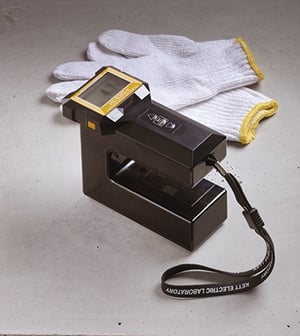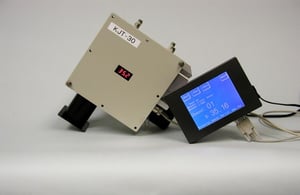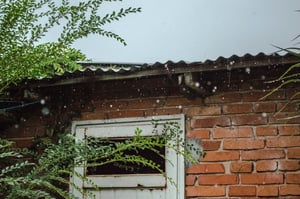The HI520-02 moisture meter has 6 calibrations that are preset and ready to go, but if this is not enough, fear not. You can add your own customized calibrations. With many moisture meters, calibrating your instrument can be tricky. This is not the case with the HI520-02.
Watch Our Video on the Easy-to-Use HI520-2 Moisture Meter
Topics: Moisture Meter, Video
Learn How The Right Moisture Meter Improves Food Manufacturer's Operations [CASE STUDY]
Regardless of socio-economic status, geographic location, race or religion, people across the globe consume food products. This creates a highly competitive marketplace for the food manufacturing industry. Grocery stores are packed with food in a range of manufactured products, from powders to grains, cereals, snack bars, gels and convenience meals- all formulated with scientific precision.
Topics: Moisture Meter
It’s All About Quality: Single Grain & Seed Moisture Meters
Few industries rely on moisture meters quite so much as the grain and seed industries. From their start as seeds to planting to harvest to distributing to consumers, knowing and maintaining moisture is vital at each step of the journey in the life of seed and grain.
Determining the viability of seeds, whether buying or selling, or preparing to plan, you can ensure that your seeds are high in quality and worthy of an investment that will ensure a strong crop yield. The best way to know how viable seeds are? With a single grain moisture meter.
Of course, some choose to send grain and seed samples to seed testing laboratories, but this process is timely and expensive, and puts a major delay in the buying, selling, and planting process. A seed moisture meter is one of the easiest ways to save funds that would have otherwise been used to send seed and grain samples to a lab for testing.
Topics: Moisture Meter, Moisture Balance
Moisture Meters and Simplifying the Food Processing Industry
From farm to supermarket to your table and every step in between, there is a constant battle to store food and maintain the perfect level of moisture to maintain the it’s longevity. Too much moisture, and your food is susceptible to mold growth, spoilage, and staleness. Too little moisture, and a product may dry out and lose its desired flavor or texture.
Topics: Moisture Meter
How Can a Fire Cause Water Damage, and What Tools Do You Need to Rebuild
When the unthinkable happens and you have a fire, there are countless things to do to get your life back to normal. Dealing with insurance, the clean-up, and the restoration that follows a fire aren’t even the full extent of the problems, though. If you’re not careful, the water used to extinguish the fire can do nearly as much damage as the fire.
Topics: Moisture Meter
Accessorize It: Extending the Life of Your Moisture Meter
There’s no doubt about it: investing in a moisture meter can be a big endeavor. Even though it is a worthwhile investment, that is frequently key to a project’s success, it’s still an investment. So how can you protect this investment? And are there other uses or applications for your moisture meter that can expand what you are able to do with it: more “bang for your buck,” so to speak?
Topics: Moisture Meter
Using a Moisture Meter to Prepare for Hurricane Season
While hurricane season 2018 is in full swing, it’s time to stop and double check: Are you fully prepared for the next torrent of rain and gale force winds? Are your home and business ready?
Topics: Moisture Meter
How Moisture Meters Can Help When Buying or Selling Your Home
If you’re preparing to make a major move, you know that there is a lot to do to prepare whether you’re buying or selling. Even after an offer has been accepted, a lot rides on a successful home inspection before you meet at closing to sign all the paperwork and hand over the keys.
Topics: Moisture Meter
Common Misconceptions about Moisture Content in Concrete
If you’ve ever worked with concrete in a construction project, you know there are many “half-truths” about successfully working with the material. Concrete can be a bit of an effusive product to use. Everything from temperature to groundwater to air circulating above a concrete slab can affect the moisture content in concrete greatly, and the wrong moisture levels can prove disastrous in something like a newly laid floor.
Topics: Moisture Meter
A How-to Guide for Cleaning Your Moisture Meter
As with all major equipment and job-specific tools, there is a proper way to ensure that your moisture meter is properly cleaned and cared for, after each and every use. If you carefully maintain your test equipment, it will thank you with years and years of accurate readings and easy use. Here are a few pointers on how to care for your meter, and keep it clean and functioning for as long and you need your moisture meter.
Topics: Moisture Meter

![Learn How The Right Moisture Meter Improves Food Manufacturer's Operations [CASE STUDY]](https://blog.kett.com/hs-fs/file-213297692-jpg/images/images.jpg?width=300&name=images.jpg)







